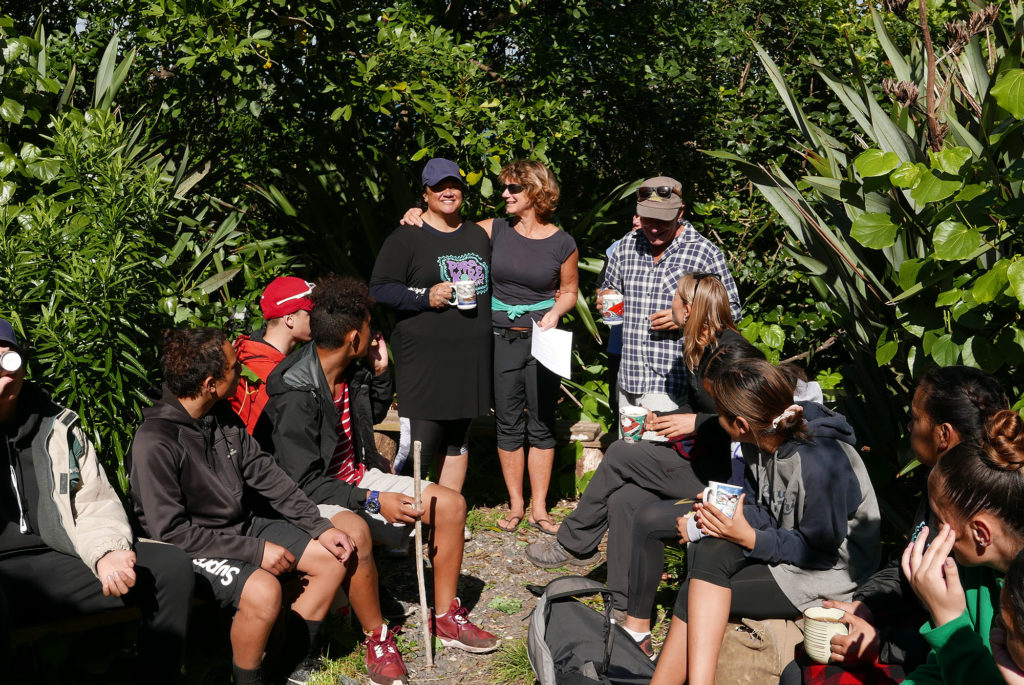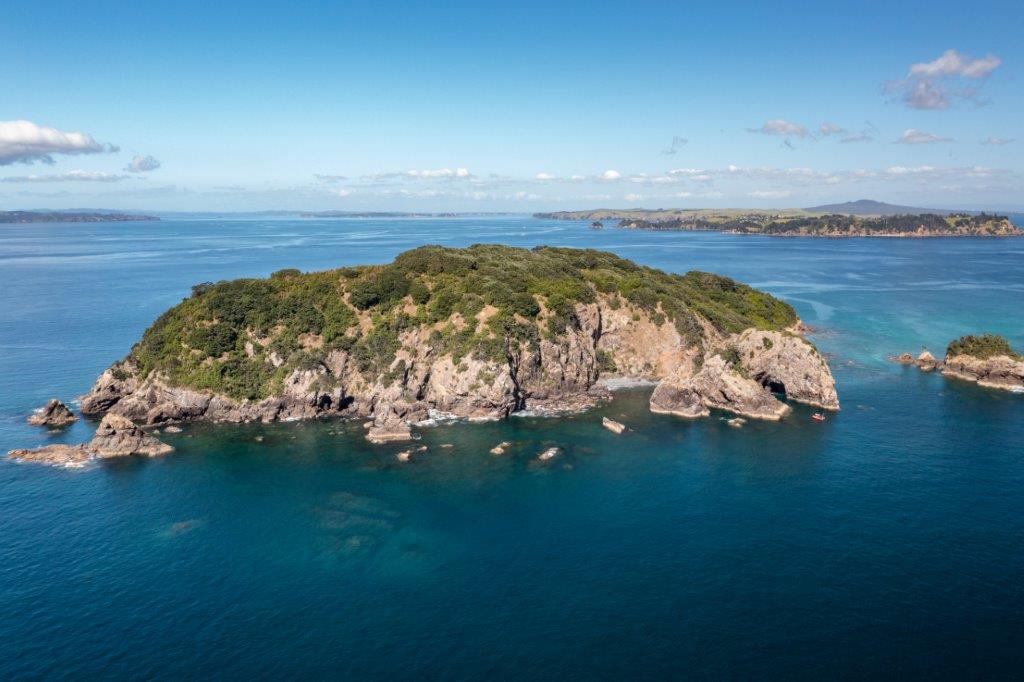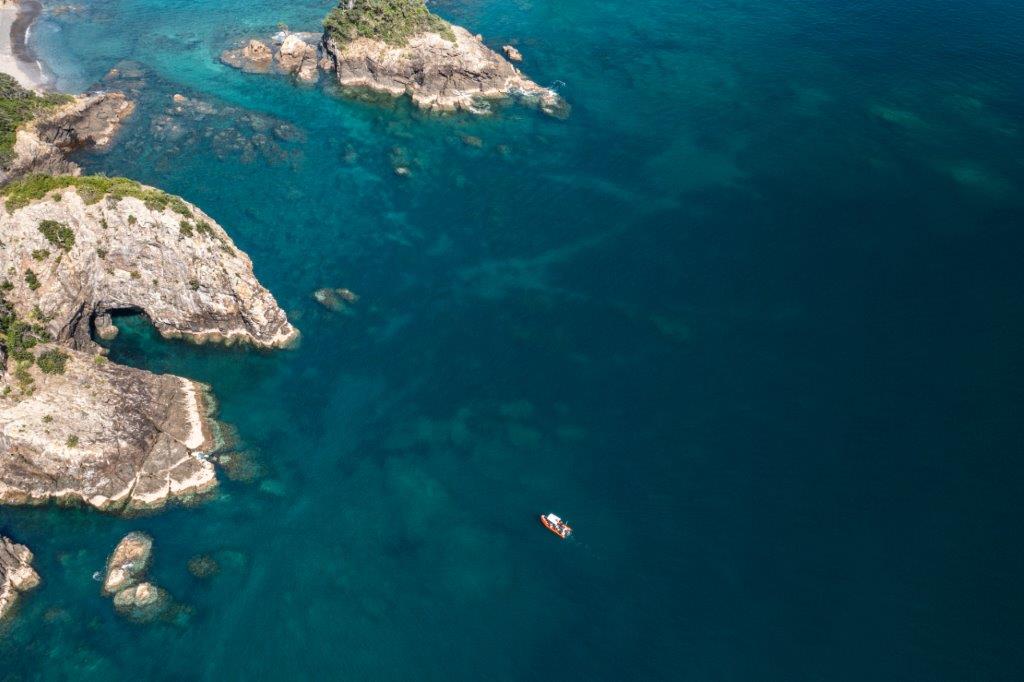The Noises hold a very special interest for seabird lovers. Being home to at least…
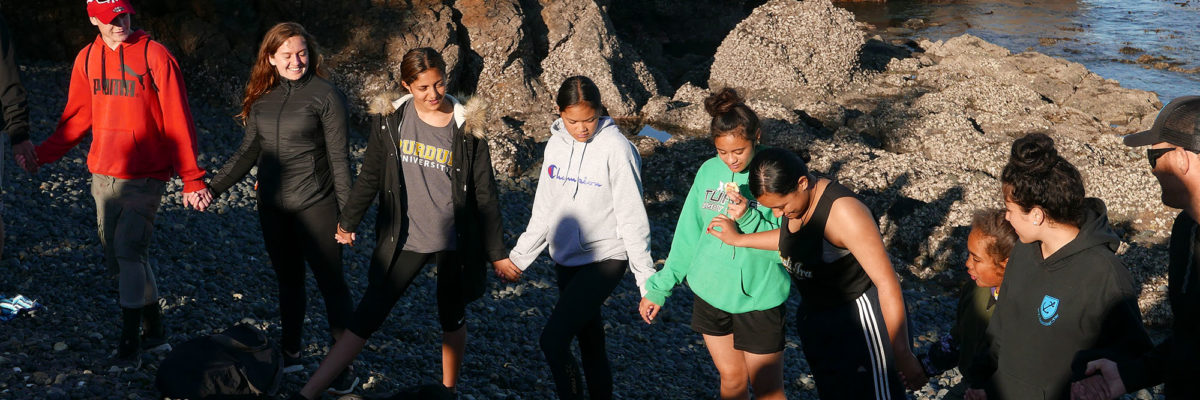
Letting the place know you
In one of Patricia Grace’s short stories, a young girl spends the last hours of a summer seaside holiday seeking a deeper communion with the place. “Because how could you be really sure of coming there again next summer?” she thinks. “And why should you come if you didn’t let the place know you?”
This was how it was for a group of rangatahi who spent a memorable spring day getting to know some motu called The Noises, which have been owned for a century by an Auckland family, the Neureuters. The family have been stewards of the islands, restoring their wildlife and forests, passing on a vision of environmental care from one generation to the next.
Their vision is expanding. They want to restore the marine environment around the islands. And they want to restore the connections of the motu to their traditional owners. So they reached out to Richelle Kahui-McConnell, an ecologist with close connections to Auckland iwi and a mission to infuse rangatahi with the principles and pathways of kaitiakitanga.
The word went out, and rangatahi responded. Urban whanau, for the most part, many with little opportunity to experience the world of motu and moana. We boarded two boats at Ōkahu Bay and in 40 minutes we were in another world, far from city life, serenaded by songbirds as we stepped ashore on magical Ōtata. We were here to get to know the place—and let the place know us.
The visit started on the beach, with an invitation by University of Auckland archaeologist Alex Jorgensen to step back in imagination 700 years, to ancestral people standing on this same beach, the newcomers from Hawaiki. They discovered this place just as we were discovering it, a whenua hou, a new land.
He speculated that inhabitants of this island could well have watched Rangitoto’s most recent eruption, some 600 years ago. It was not hard to picture these ancestors’ lives as Alex interpreted the middens they left behind. Protruding from the crumbling earth banks were fish bones, bird bones, a multiplicity of shells, fragments of charcoal from hangi fires, knife-sharp shards of obsidian. The museum of the land spoke loudly.
One of the rangatahi picked up a bleached stingray barb from among the beach wrack. She felt it was somehow “for her,” but didn’t know the reason yet. A Māori worldview of knowing asserts that knowledge, always there, reveals itself once you become attuned.
We moved inland on a trail through cool, regenerating forest, then turned aside to meet Ōtata’s equivalent of the movie Avatar’s “tree of souls,” an ancient pohutukawa (~800 years old) with a vast canopy and a trunk so fissured with cracks and crevices that it seemed a perfect home for island creatures. And so it is. At night this tree comes alive with the delicate crawling of wētāpunga, a type of giant wētā that is being captive-reared by Auckland Zoo and liberated on predator-free islands like Ōtata. Such is the mauri of this place that they breed prolifically, and their offspring could be relocated to other Hauraki Gulf motu.
We watched as the latest arrivals were liberated on the tree, marvelling at their aura of antiquity, a mauri connection that transported us to prehuman, pre-rodent times, when such insect giants filled Aotearoa’s forests.
Kerry Lukies, a masters student at the University of Auckland who is studying korora, the little blue penguin, lifted the lid on a “penguin motel”—one of many around the island—and invited us to glimpse an almost full-grown chick. Kerry is researching stress and foraging behaviour in the penguins, trying to understand the challenges they face in a marine environment that is under growing pressure from Auckland’s rampant urbanism and the Hauraki district’s intensive agriculture.
We walked with her to the northern cliffs of the island and counted the recreational boats fishing around the island. There were more than 50. “Each fisher can legally take up to 20 fish,” we were told. We did the maths and wondered what hope there was for Tangaroa’s domain.
We took to the sea ourselves, in the research vessel Hawere from the University of Auckland’s marine laboratory at Goat Island. Marine biologists helped rangatahi deploy a seabed-scanning video camera and watch the footage on an iPad. The seabed looked poorly: patchy seaweed and “kina barrens,” not much in the way of shellfish or fish. A severely diminished habitat.
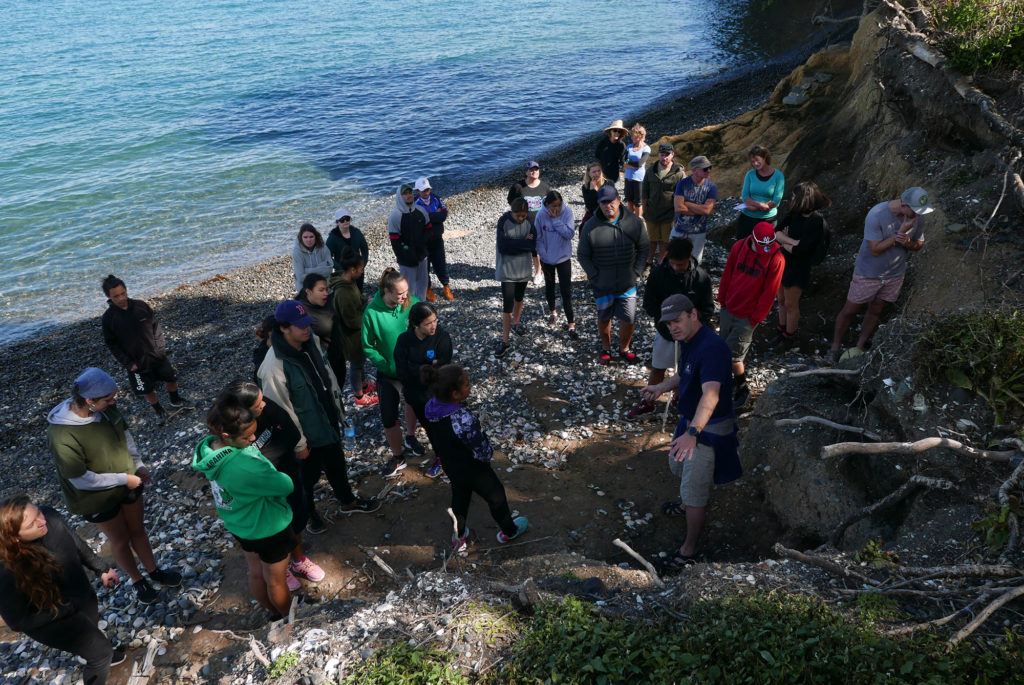
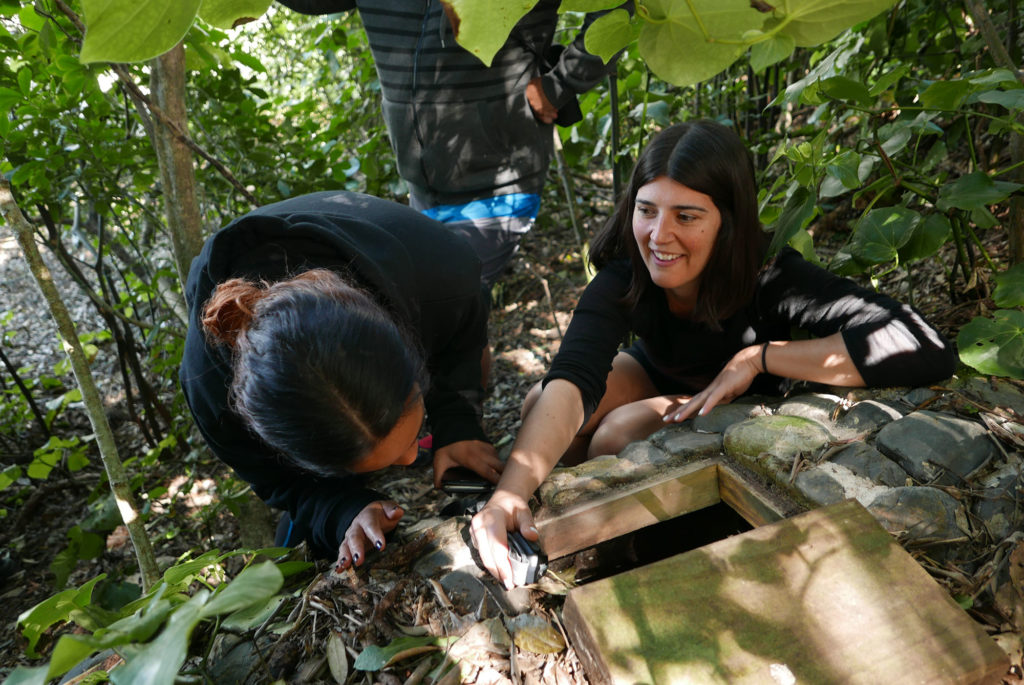
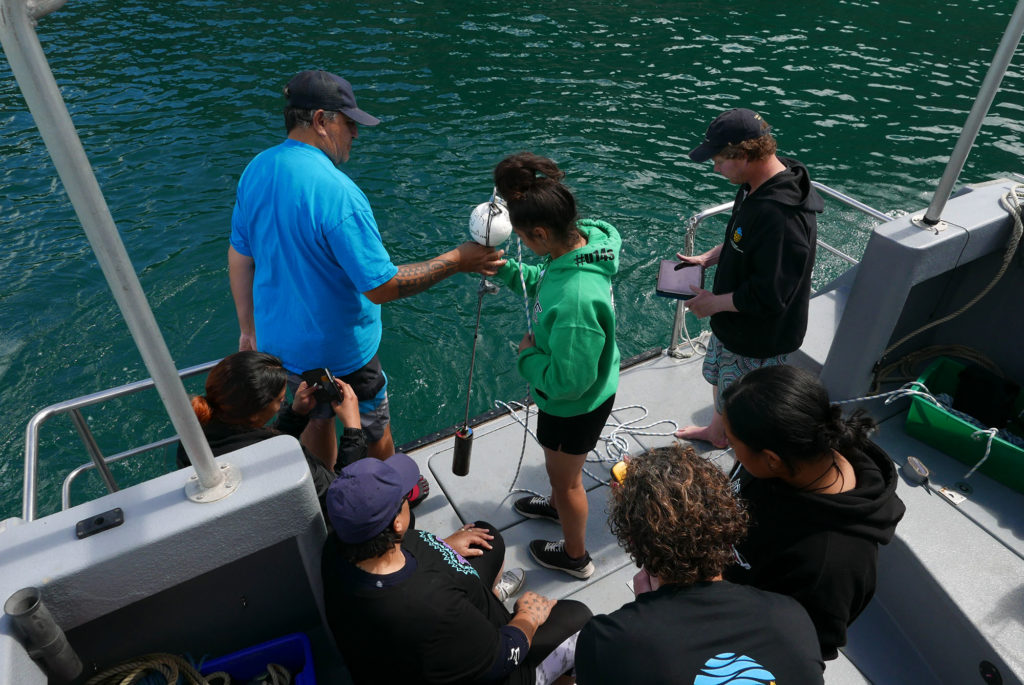
The Neureuters spoke of their own family memory of marine decline. They have glass jars of seashells their mother collected from Ōtata’s beaches—a kaleidoscope of shape and colour. The family sees only a tiny fraction of these species today. Depletion is the story of Tīkapa Moana.
Rod Neureuter spoke of a diary kept by his mother that recorded “boil-ups”—feeding frenzies in which dolphins and large predatory fish such as kingfish and kahawai drive baitfish to the surface, making it boil with splashing fish bodies and attracting diving seabirds from far and wide. These events were a frequent sight. Now they are so rare that they evoke feelings of relief, said Sue Neureuter, “and not the joy once felt at this sight.”
But the pull of kai moana is strong, even existential. At lunchtime some rangatahi asked for snorkelling gear and a knife. The prospect of fresh seafood was pulling them to the shore as the tide dropped and the reefs became exposed. They collected kina and sat on the sun-warmed stones of the beach, cracking them and scooping out the slippery yellow roe.
As the tide dropped lower, the marine biologists set down metre-by-metre quadrats on the rocky shore and handed out identification pamphlets. We set to, counting cushion stars, tufting algae, whelks. One marine biologist asked in dismay, “Where are all the hermit crabs?” Indeed, only one was found in all that searching.
The Neureuters are seeking ways to enact marine protection around their islands. Whether through conventional marine protected areas or some other legislative tool, they want desperately to turn around the trend lines of decay, just as they have on land. During our walk around Ōtata we found wriggling masses of geckos basking between sheets of corrugated bitumen—a sight inconceivable on the mainland. For the rangatahi, it was the weaving of another strand of connection to an ancient lifeworld. It is remarkable to think that when the Neureuters stay on the island during summer, the first housekeeping job they have to do is sweep out the skins shed by geckos from the floors and walls. They long to see that transformation in the sea.
More than 40 of the gulf islands are now predator-free, and in September 2018 a collective on Waiheke announced Te Korowai o Waiheke, an ambitious plant to make Waiheke the world’s first predator-free urban island. Island eradication of predators had its beginnings right here, in the Noises. Tiny Ruapuke, or Maria Island, was one of the first islands in the world to be cleared of rats. The rodents had invaded in 1959, and killed nearly 1000 white-faced storm petrels. A group of volunteers from Waiheke and Auckland laid rat bait across the island, which is roughly the size of three rugby fields, and by 1964 the island was again rat-free. The petrels have returned, and so has the forest.
Rangatahi saw the site for themselves on a boat trip around the Noises group, which includes rocky islets that barely protrude above the sea and two larger, forested islands. That wasn’t all they saw. Tangaroa’s greatest gift was the sighting of an orca mother and calf. It was as if Hauraki’s legendary taniwha, Ureia, was welcoming the young people into to his realm, gesturing to the potential of future abundance in this moana.
In the Patricia Grace story, the girl walks into the sea, letting the water move her, and several of the girls in our group did the same, commandeering a sea cave the Neureuters called “Blinking Eye” for the way the waves cover and reveal an opening at the back of the cave. There they stayed a long time, lying in the pools within the cave, seemingly oblivious to cold springtime water temperatures, knowing the place and letting the place know them.
Before leaving for the journey back to Auckland, the group held hands on the beach and spoke a word of what the visit had meant to them. One young person asked, “Is this part of something bigger?”
Yes, we all believe it is. Like the stingray barb on the beach, we don’t know the meaning yet, or the purpose, but something is revealing itself—in the shape of an orca visitation, in the shape of gannets diving like missiles into the sea, in the taste of kina and the smell of penguin. Something begins.
This blog is published in memory of our dear friend Richelle Kahui-McConnell.
Richelle Kahui-McConnell passed away last year, but neither she nor her māhi will be forgotten. Richelle was so many things to so many of us, including being a driving force who created opportunities for rangatahi to forge connections with te taio (nature) and have a voice in expressing kaupapa Māori.
As a Kaiwhakaora Whenua (Earth Healer) Richelle gave her boundless energy to so many projects including out on The Noises, and the islands are richer for her fierce and compassionate energy. Without Richelle’s leadership and guidance, we would not have benefitted from the memorable rangatahi trip to Ōtata in September 2018 when nineteen young people from 11 different iwi spent the day with nine mātauranga Māori knowledge holders and scientists. That day sparked the beginnings of some special relationships and also helped change perceptions. Our eyes and minds were opened to the rich rewards that can be reaped when we work together to learn from one another. The continuation of this work is very important to us, and we will do so in Richelle’s memory.
Our family would like to acknowledge the wonderful wāhine toa and friend that Richelle was to us, by sharing this touching story by Kennedy Warne. Kennedy Warne is the founding editor of NZ Geographic, a friend of The Noises and one of the manuhiri present on that magical Saturday in 2018.
